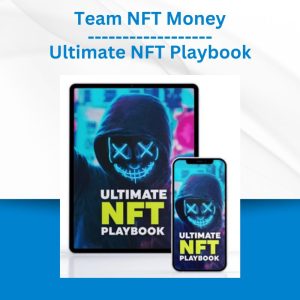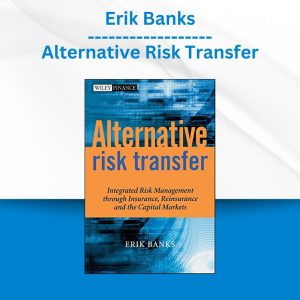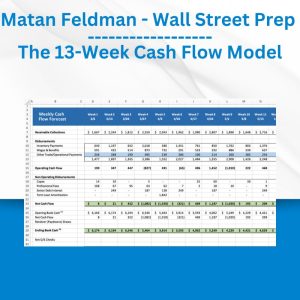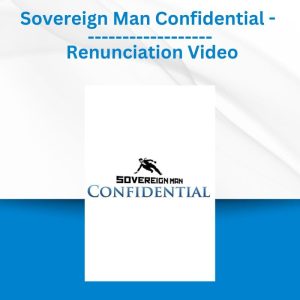*** Proof of Product ***
Exploring the Essential Features of “Gary Rendsburg – The Dead Sea Scrolls”
The Dead Sea Scrolls
Unearth the spellbinding story of the greatest archaeological discovery of the 20th century-a 2000 year old library of historical, religious, and linguistic significance.
LECTURE (24)
01:The Discoveries and Their Significance
Learn what the Dead Sea Scrolls are, the story of their unlikely discovery, and the state of scholarship about ancient Judaism and early Christianity prior to the scrolls’ surfacing. The discovery of the Dead Sea Scrolls would alter our understanding of every aspect of the crucial historical period in which they were created.
02:The First Seven Scrolls
Plunge into a tale of excitement and adventure and discover more about how scholars gained access to the first seven scrolls discovered at Qumran-and what they found when they began to translate these extraordinary initial discoveries.
03:Opening and Reading the First Scroll
This lecture begins your immersion into the text of the scrolls themselves, starting with the scroll known as the Community Rule or Manual of Discipline-the important text that gives us our first insight into the community and theology of the scrolls’ creators and guardians.
04:The Historical Backdrop of Ancient Judaism
Consider history prior to the scrolls, beginning with the biblical period and moving forward to focus on the Maccabean revolt, the arrival of the Romans, the reign of King Herod, the life of Jesus, the Zealot uprising, the destruction of Jerusalem, and the fall of Masada.
05:The Rise of the Jewish Sects
Gain insight into the appearance of Jewish sectarianism in late antiquity-focusing primarily on the Sadducees, Pharisees, Essenes, and Zealots-through the Jewish historian Josephus, along with the Jewish philosopher Philo, the authors of the New Testament books, the later rabbis, and even the Roman polymath Pliny the Elder.
06:The Dead Sea Site of the Qumran Sect
Journey to the isolated region of Qumran’s caves and learn how archaeological excavations of a nearby ruin helped scholars form the most accepted hypothesis of who wrote the scrolls and why the scrolls were deposited in the caves.
07:The Emergence of the Rabbinic System
Step forward in time to examine some later rabbinic texts from the 3rd century and the rise of the rabbinical tradition itself, both of which provide vital perspectives on the composition of the Dead Sea Scrolls.
08:A Dead Sea Scroll from Medieval Cairo
Focus on the famous Damascus Document, two copies of which were discovered in a Cairo synagogue in the 1890s. Although the copies were medieval, the texts themselves were believed to be ancient-a conclusion later confirmed when fragments of the same texts were found at Qumran.
09:Pesher Interpretation-Prophecy Read Anew
Look at a scroll known as the Pesher Habakkuk, the most prominent representative of an interpretive method whereby the true message of a biblical book is read as speaking to present-day conditions, as opposed to the original setting centuries earlier.
10:The War Scroll and Other Apocalyptic Texts
Two key scrolls-one of which details a cataclysmic battle between the “Sons of Light” (the Qumran sect’s self-designation) and the “Sons of Darkness” (all other Jews, apparently)-offer you a window into apocalyptic belief among the Dead Sea sectarians.
11:Biblical Manuscripts at Qumran
Using clarifying examples of biblical text, enter the arcane world of textual criticism, learning about the transmission of texts in antiquity, the oral reading tradition, the translation of the Bible into Greek, the Samaritan version of the Torah, and, of course, the Qumran biblical manuscripts themselves.
12:Alternative Views of Qumran and the Scrolls
Most scholars believe the Dead Sea Scrolls were authored by a Jewish sect identified with the Essenes, who then hid the documents from the advancing Roman army in 68 C.E. This is not the only view, however. In this lecture, learn about several dissenting views.
13:Stops and Starts En Route to Publication
The story of the Dead Sea Scrolls involves much more than just archaeology and analysis. This lecture takes you into the intrigue, scholarly rivalry, and sometimes astonishing delays that marked the scrolls’ long journey from discovery to complete publication.
14:The Qumran Vision for a New Temple
Explore in detail the Temple Scroll, which reworked the Torah’s laws, using the book of Deuteronomy as a base. Also, learn how a key shift in the text’s narrative voice-to that of God speaking in the first person-has drawn attention to a major belief central to the Qumran sect.
15:Daily Life at Qumran
How did the Qumran community go about its daily life? This lecture integrates both textual and archaeological data to examine the sect’s social structure, economy, farming, food production, and the question of women at Qumran.
16:The Halakhic Letter-Rituals Define the Sect
This treatise on 20 points of Jewish law, written by the Qumran sect’s leader, was published in modern form 40 years after its discovery. Follow the twists and turns of that story before delving into the contents of this foundational text for the Qumran community.
17:The Qumran Biblical Canon
When the Qumran community existed, the biblical canon was not yet fixed, with different Jewish groups seeing as canonical some texts that others did not. Examine some texts shedding light on the Qumran canon, including the Genesis Apocryphon and its detailed elaboration of Sarah’s physical beauty.
18:The Qumran Calendar
Look at the ways in which the arrangement of the yearly calendar influenced the practice of faith, and how the Qumran community used a different calendar from other Jews of the time.
19:Jewish Scholars and Qumran Ritual Practices
Return to the process by which the scrolls were published, learning how several key events in 1991 ultimately shattered the scholarly monopoly and paved the way for close examination of religious practices at Qumran, including the use of tefillin, the mezuzah, and the recitation of Grace after Meals.
20:Prayers, Hymns, and the Synagogue
Continue your focus on Jewish ritual at Qumran, with special attention to prayer and the role of the synagogue, before turning to the last of the original seven documents to be examined in this course, a lengthy collection of poetry known as the Thanksgiving Hymns.
21:Qumran Hebrew as an Anti-Language
Turn to the dialect used in the Dead Sea Scrolls known to scholars as “Qumran Hebrew”-an example of the sociolinguistic phenomenon of “anti-language”-and investigate how it could be used by the sect to set itself apart.
22:The Enigma of the Copper Scroll
Learn how the Qumran community’s most remarkable and puzzling text-the corroded metal sheets of which needed to be cut apart into strips to permit reading-proved to contain obscure hints of the locations of vast and specific amounts of gold, silver, and other treasure.
23:Connections to Christianity
There are many links between the Dead Sea Scrolls sect and the Jesus movement. This lecture gathers connections already mentioned in earlier lectures and further explores beliefs and practices shared by the Qumran sect and earliest Christianity.
24:Scroll Fragments and a New View of Judaism
Even quite fragmentary scrolls offer new insights. This lecture samples three such fragments, turns to the ultimate fates of the different sects, and then concludes with a look at lessons the scrolls offer us today.
DETAILS
Overview
Get a comprehensive, 24-lecture introduction to the unique series of archaeological documents that have irrevocably altered how we look at and understand the foundations of faith and religious practice. In The Dead Sea Scrolls, Professor Gary A. Rendsburg&;amp;-a dedicated Dead Sea Scrolls scholar who has spent decades immersed in the study of this amazing find&;amp;-tells you what the scrolls are and what they contain, and describes the intriguing story of how their unparalleled insights into religious and ancient history came into focus.
About
Gary A. Rendsburg
“I’ve always had a love of history, so I very much enjoy bringing this aspect to our course.”
ALMA MATER New York University
INSTITUTION Rutgers University
Dr. Gary A. Rendsburg holds the Blanche and Irving Laurie Chair in Jewish History in the Department of Jewish Studies at Rutgers University, where he also holds an appointment in the History Department. He earned his M.A. and Ph.D. in Hebrew Studies from New York University and taught at Canisius College and Cornell University-the latter for 18 years-before joining the Rutgers faculty in 2004. The author of six books and more than 120 scholarly articles, Professor Rendsburg takes a special interest in literary approaches to the Bible, the history of the Hebrew language, the history of ancient Israel, and the development of Judaism in the post-biblical period. His works include The Bible and the Ancient Near East (1997), a general survey of the biblical world coauthored with the late Cyrus H. Gordon, and, most recently, Solomon’s Vineyard: Literary and Linguistic Studies in the Song of Songs (2009), coauthored with Scott B. Noegel. Professor Rendsburg has visited all of the major archaeological sites in Israel, Egypt, and Jordan and has explored Qumran, the site of the discovery of the Dead Sea Scrolls, repeatedly for several decades. He has participated in excavations at Tel Dor and Caesarea. His main research interests are the literature of the Bible, the history of ancient Israel, the historical development of the Hebrew language, and the relationship between ancient Egypt and ancient Israel. Professor Rendsburg has received several fellowships including the Center for Advanced Judaic Studies at the University of Pennsylvania, and the National Endowment for the Humanities.
Please see the full list of alternative group-buy courses available here: https://lunacourse.com/shop/










 Simpler Trading - Bruce Marshall - The Options Defense Course
Simpler Trading - Bruce Marshall - The Options Defense Course  George Fontanills & Tom Gentile - Optionetics 6 DVD Series Home Study Course (Digital Download)
George Fontanills & Tom Gentile - Optionetics 6 DVD Series Home Study Course (Digital Download)  Toshko Raychev - Profit System + ITF Assistant
Toshko Raychev - Profit System + ITF Assistant  The Daily Traders – Exclusive Trading Mentorship Group
The Daily Traders – Exclusive Trading Mentorship Group  Dave Landry - Stock Selection Course
Dave Landry - Stock Selection Course  Racing Workshop - Complete Online Package
Racing Workshop - Complete Online Package  Erik Banks - Alternative Risk Transfer
Erik Banks - Alternative Risk Transfer  Crypto Dan - The Crypto Investing Blueprint To Financial Freedom By 2025
Crypto Dan - The Crypto Investing Blueprint To Financial Freedom By 2025  Matan Feldman - The 13-Week Cash Flow Modeling - Wall Street Prep
Matan Feldman - The 13-Week Cash Flow Modeling - Wall Street Prep  Akil Stokes & Jason Graystone - TierOneTrading - Trading Edge 2019
Akil Stokes & Jason Graystone - TierOneTrading - Trading Edge 2019  Cynthia Webner - 2-Day Cardiac Essentials Conference: Day Two: The Core Cardiac Competencies - PESI
Cynthia Webner - 2-Day Cardiac Essentials Conference: Day Two: The Core Cardiac Competencies - PESI  Sovereign Man Confidential - Renunciation Video
Sovereign Man Confidential - Renunciation Video